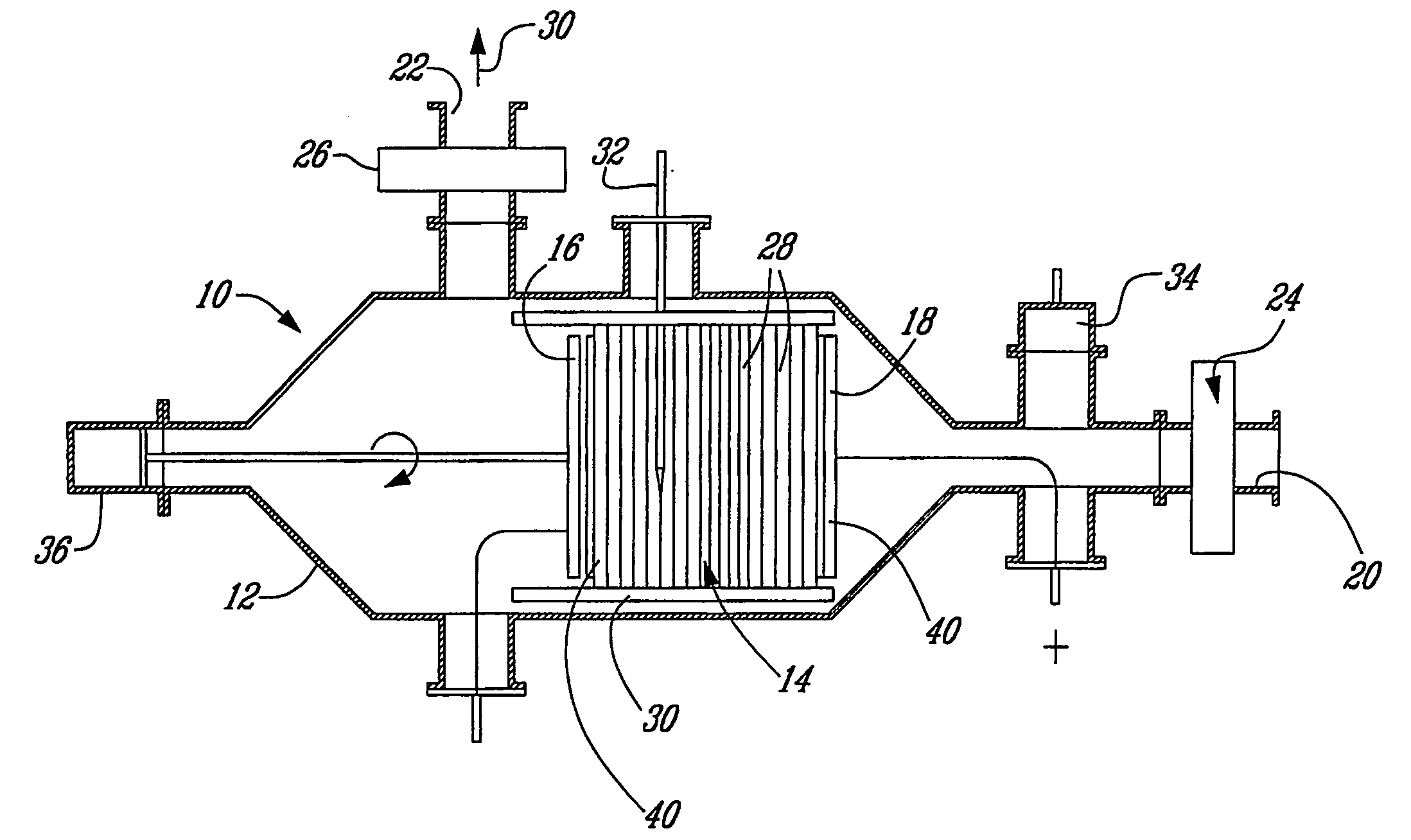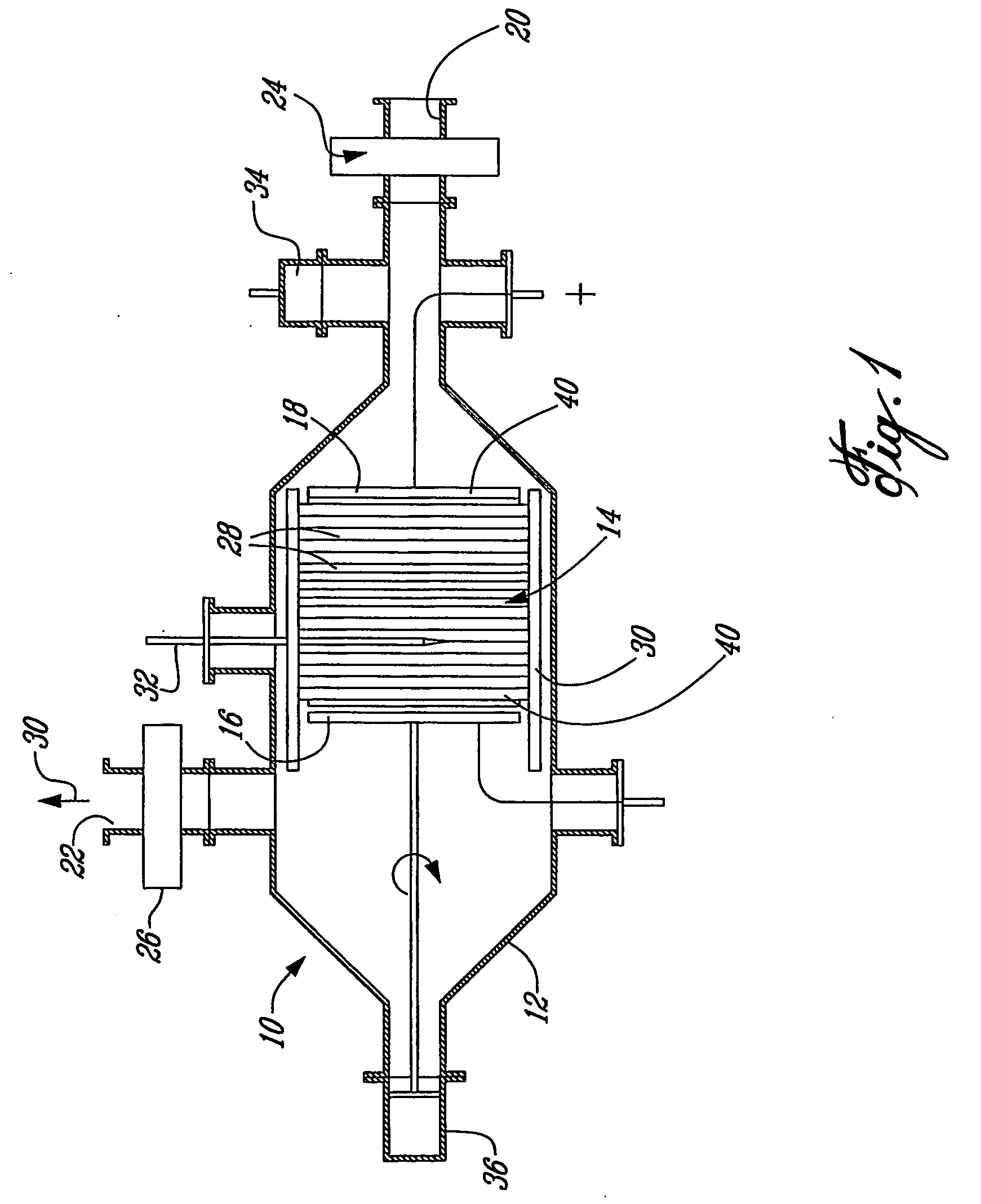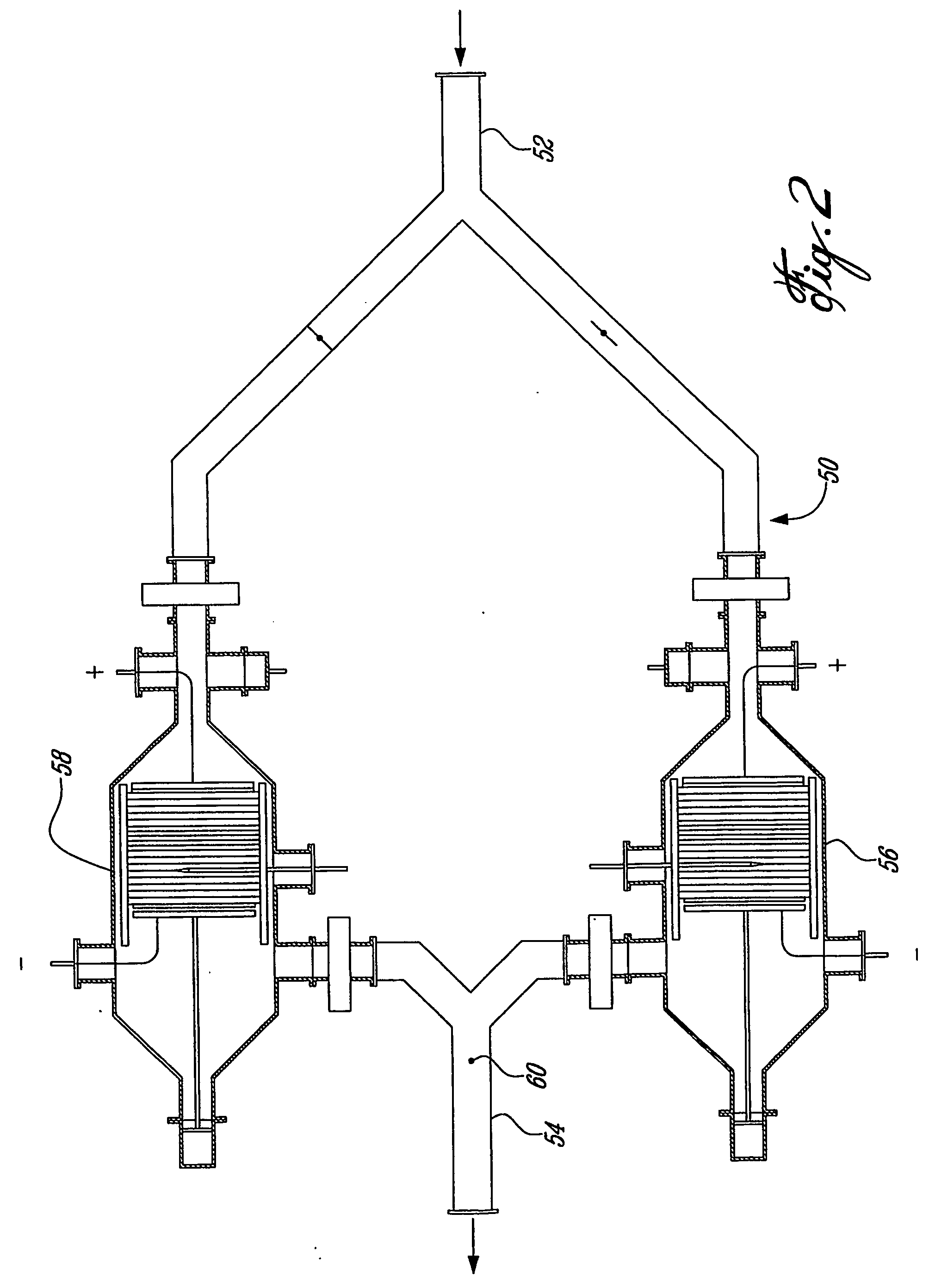Adsorption of contaminants from gaseous stream and in situ regeneration of sorbent
a technology of in situ regeneration and sorbent, which is applied in the direction of combustible gas purification/modification, separation process, filtration separation, etc., can solve the problems of reducing the adsorption capacity of bonded carbon, laborious, and laborious, and achieves the effect of increasing the heat generation level and decreasing the compression level
- Summary
- Abstract
- Description
- Claims
- Application Information
AI Technical Summary
Benefits of technology
Problems solved by technology
Method used
Image
Examples
Embodiment Construction
[0033] a) Adsorption and Desorption
[0034] The invention contemplates adsorption of contaminant from a gaseous stream bearing the contaminant on an activated carbon cloth material which is electrically conductive and resiliently compressible.
[0035] The invention also contemplates desorption of the contaminant from the cloth material loaded with adsorbed contaminant.
[0036] The adsorption is typically carried out at ambient temperatures of 10 to 30° C., more especially about 20° C. by flowing a gaseous stream bearing the contaminant through the activated cloth material; the contact time for adsorption is typically less than 1 second and more especially less than 0.1 second.
[0037] The contaminant may be a useful material which may be recovered for re-use in a subsequent step, for example, solvent which accumulates in the atmosphere in industrial premises; or it may be a noxious or non-useful material which is to be collected for disposal. In general, the contaminants will be organic...
PUM
| Property | Measurement | Unit |
|---|---|---|
| temperature | aaaaa | aaaaa |
| temperatures | aaaaa | aaaaa |
| temperatures | aaaaa | aaaaa |
Abstract
Description
Claims
Application Information
 Login to View More
Login to View More - R&D
- Intellectual Property
- Life Sciences
- Materials
- Tech Scout
- Unparalleled Data Quality
- Higher Quality Content
- 60% Fewer Hallucinations
Browse by: Latest US Patents, China's latest patents, Technical Efficacy Thesaurus, Application Domain, Technology Topic, Popular Technical Reports.
© 2025 PatSnap. All rights reserved.Legal|Privacy policy|Modern Slavery Act Transparency Statement|Sitemap|About US| Contact US: help@patsnap.com



